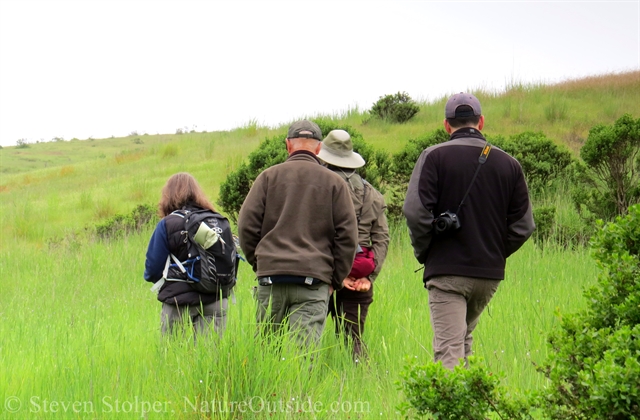
I’m out with the Bay Area Tracking Club, taking adventure where it comes. This month, we are granted special permission to enter private land.
It’s still chilly at 8:00 am. And the high overcast conceals the sun. As we walk along the dirt road, none of us casts a shadow.
Our congenial group has no idea what we’ll find. This area, on the western slopes of the Santa Cruz Mountains, is abundant with wildlife. But cattle graze this area more than in the past. And we worry that they will have obliterated all the interesting animal sign.
First Sighting
The day starts out great for me. I see my first-ever Black-headed Grosbeak! The birds breed in California but spend winters spread across central Mexico. I watch it sing, and notice that its coloring makes it look female. Do female Grosbeaks sing? Is this an immature male, or is it changing into its breeding plumage? My lack of experience with these birds shows.
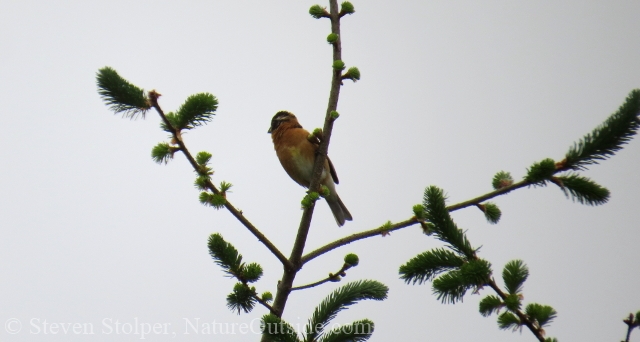
This Grossbeak sings underneath an overcast sky
Trailing
A number of trackers separate from the main group. A senior tracker walked in the grass earlier this morning. As a challenge, the group attempts to discover where she left the road and follow her trail. It’s a good exercise. I often practice with deer, following the grass that “shines” back at me, their stalks bend in the direction of travel.
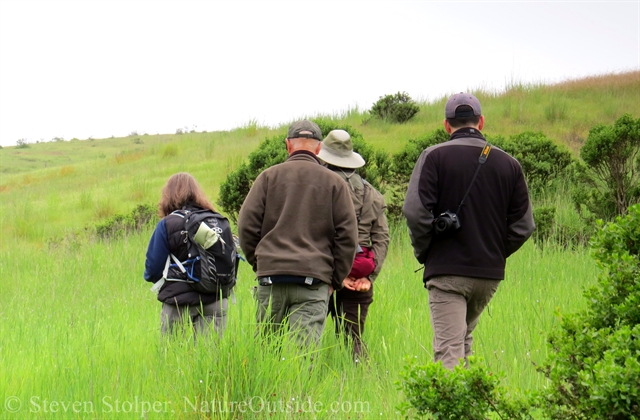
Trackers follow the trail that a human left a few hours earlier.
I notice, without explicit agreement, that we’re all wearing earth-toned clothing. The famous bushcrafter, Horace Kephart, said in his 1906 book:
The color of a woodsman’s clothing should be as near invisibility as possible – unless he ranges through a country infested with fools with guns.
I think the trackers instinctively want to blend with nature, not clash with it.
Walking the road
As we walk down the road, we look for reptiles and amphibians around pools left by recent rains. We find a tiny Coast garter snake that has suffered a traumatic early-life experience. A small wound, most likely from the beak of a bird, has healed near its tail. It’s close enough to the snake’s vent that the predator must have received a face-full of musk. Even as we examine it, the snake excretes great quantities of the distasteful fluid to defend against us.
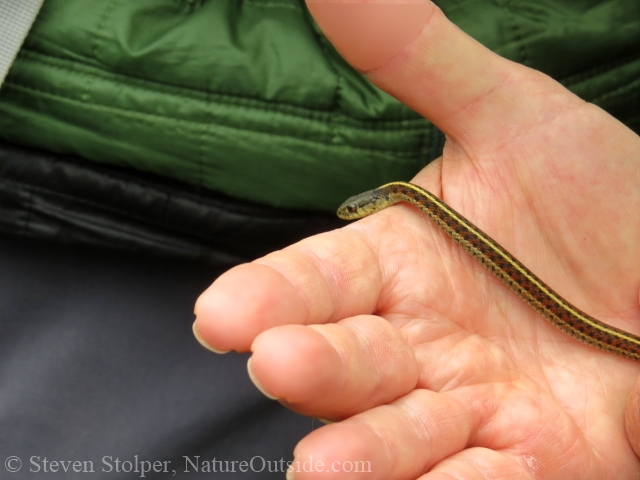
Tiny garter snake (Thamnophis elegans terrestris)
Garter snakes are not dangerous to humans. But they do have toxins in their saliva that can be deadly to their prey. Their bite might do little more than produce an unpleasant reaction in some people. According to the California Herps website, the origin of its scientific name is:
Thamnophis (Greek) – thamnos – shrub or bush, and ophis – snake, serpent
elegans (Latin) – fine or elegant — “delicately carinated”
terrestris (Latin) – of the earth – probably refers to the habitat and the terrestrial nature
I think this is a terrific name, given their black, red, and yellow decoration.
Red-winged blackbirds buzz around us as we walk along the marshy ground. They engage in fierce battles for breeding territory. And I’m amused by their maneuvering and buzzing calls as they posture against rivals.
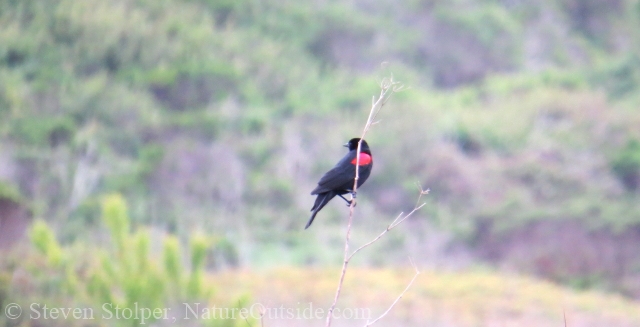
Red-winged blackbirds engage in territorial battles around us
The Scene of the Crime
We approach a barn, still in use. And I marvel at Cliff swallow nests built in the eaves. This area has everything swallows need to start a family: open areas to forage, a structure to build nests on, and a source of mud among the many pools and a nearby lake.
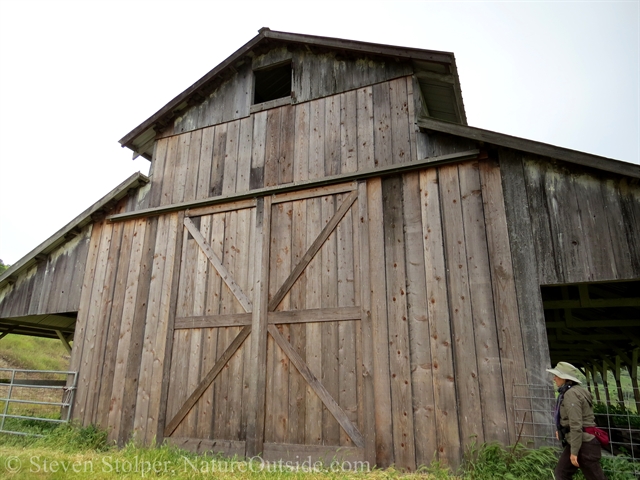
The barn is a home to more than just domesticated animals
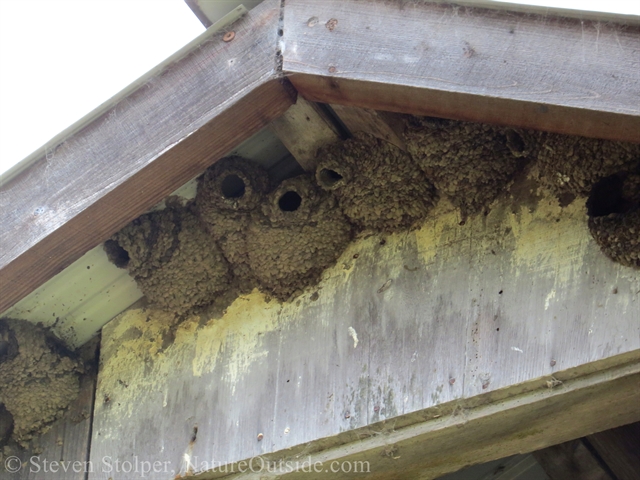
Cliff swallow (Petrochelidon pyrrhonota) nests, constructed from mud, hang from the eaves.
A group of horses graze nearby. They slowly approach, down a hillside, to drink and to have a look at these strange interlopers.
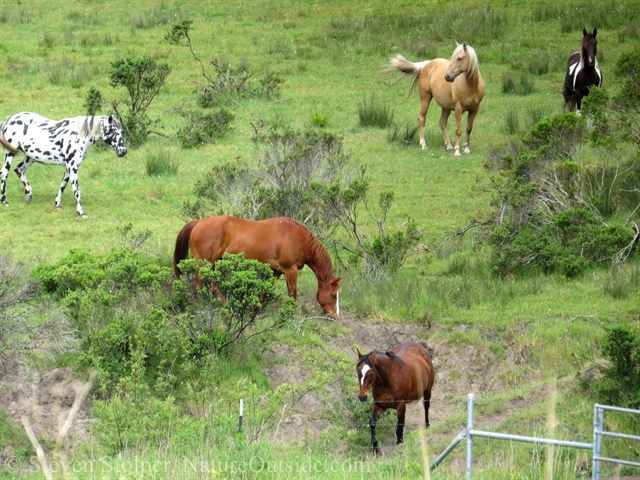
Horses approach for a drink, and to have a look at us
The family who looks after the land stops by to walk with us as we track. One of them has a week-old lamb. It’s been abandoned by its mother and the children are rearing it.
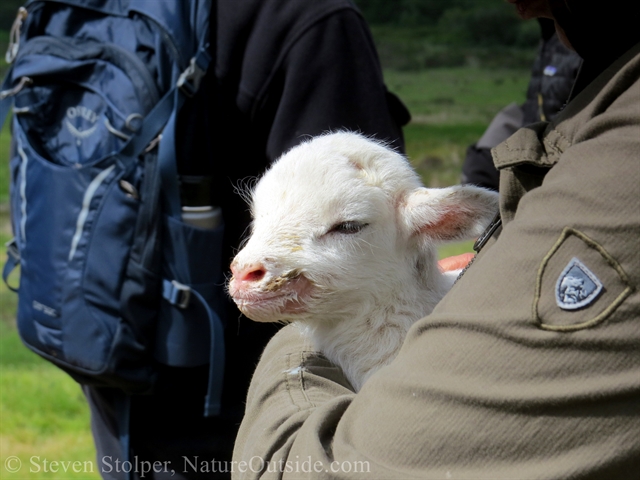
Young lamb
Whodunnit?
There’s a sudden commotion and I spin around. One of the trackers has pulled a body from the tall grass nearby.
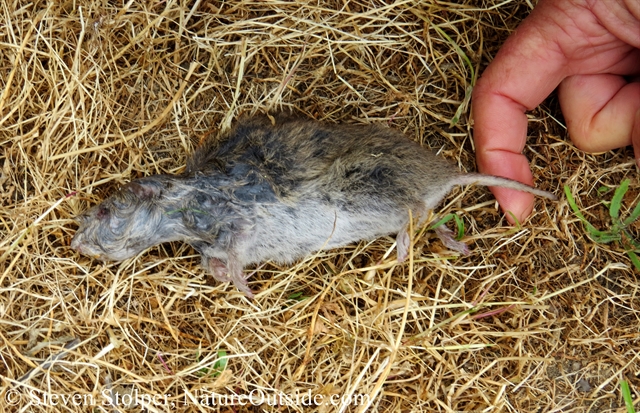
The body of a California Meadow Vole (Microtus californicus)
It’s a California Meadow Vole (Microtus californicus). These rodents are ubiquitous throughout California. They are generally 6-7 inches long with a 2-inch tail. What seals the ID is its two-toned tail. It’s short tail, less than half its body length, has dramatically different colors on top and bottom.
Voles are prolific breeders, and on the menu of hawks, owls, coyotes, skunks, and snakes. As one of the trackers put it, “Animals eat them like popcorn!”
Animals eat them like popcorn!
But there are some strange things about the body. It’s intact! It hasn’t been consumed in any way. There is a small wound on its back. But it’s not a puncture wound, like I would expect from a fang or canine. It’s more of an abrasion.
But strangest of all is its fur – It’s matted down with saliva! Several of the trackers exclaim, “It’s been mouthed!” From the head, the entire upper third of its body has been bathed in liquid. Its hair and ears are slicked back and matted together. The remainder of the body appears untouched. What could have caused this?
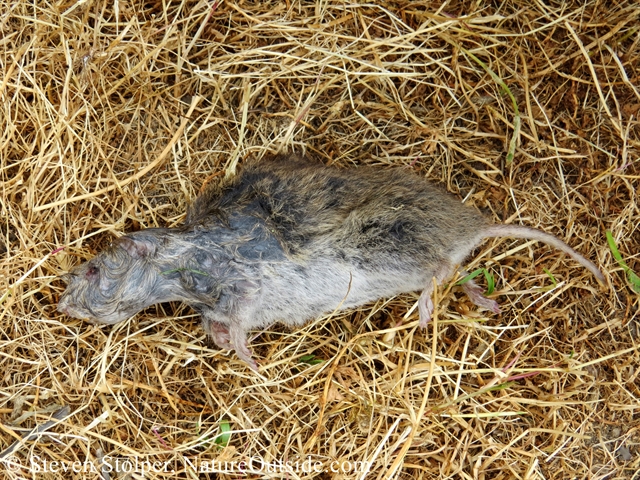
Notice how the hair is matted on the front third of the animal. There’s almost a line that shows what part of the vole was in someone’s mouth.
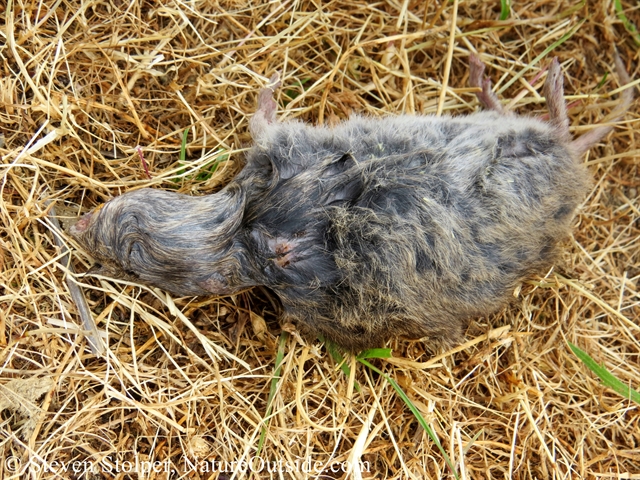
The small wound on its back is more of an abrasion, not a puncture.
Here’s a closer look at our vole:
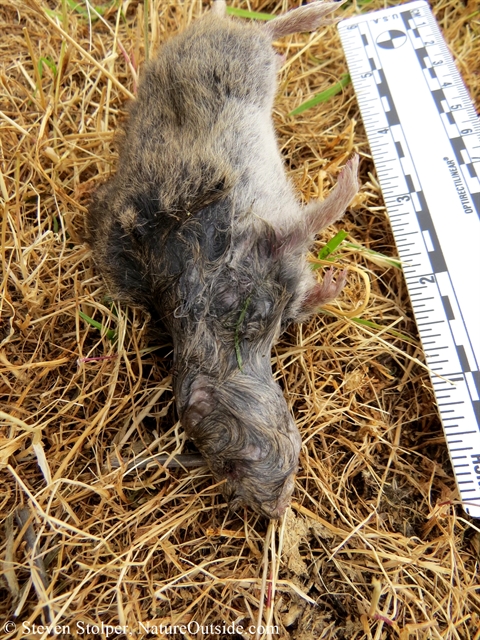
Photo by BATC
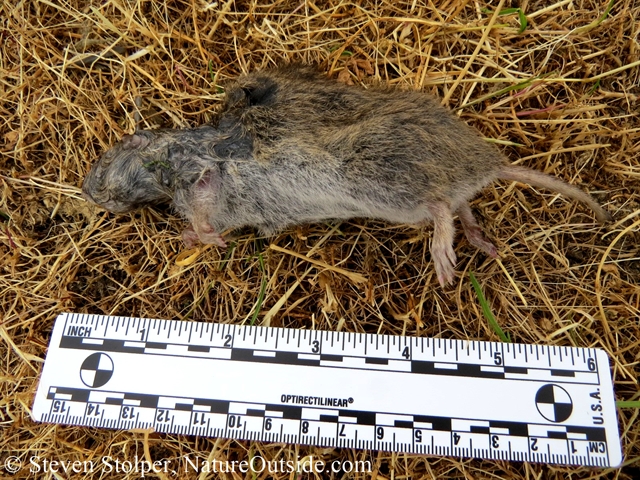
Photo by BATC
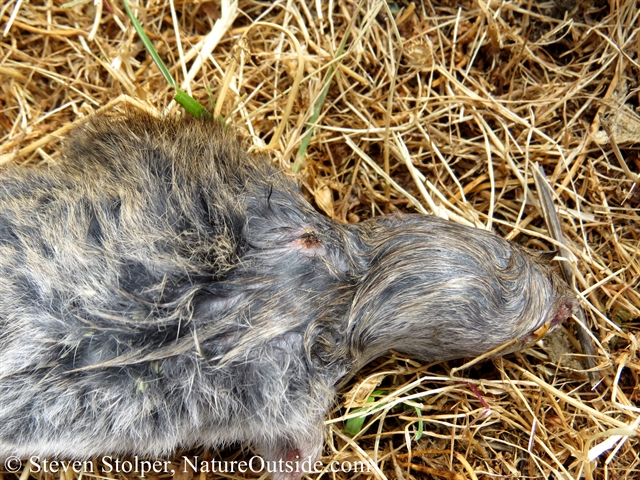
There are coyote, fox, and bobcat tracks in the area. But we don’t think any of them are responsible. This is most likely the work of a snake! The snake attempted to swallow the vole from the head. But the vole was too big! Fortunately for the snake, it was able to disengage from its prey before choking to death.
Both garter snakes and gopher snakes live in the area. But one of the senior trackers suspects a garter snake. He explains that gopher snakes “are experts at this” and are less likely to attack a rodent they can’t swallow.
I’m unsure. It’s hard for me to imagine a garter snake, even the larger ones, going for a rodent of this size. But I defer to my colleague’s judgment and experience. He tells me he’s seen this sort of thing before. And now I know what to look for, too!
The Deer-Eating Tree
The clouds burn-off as we amble further down the road under a brilliant blue sky. A tracker snaps my picture as I stand over some fox tracks. I’m wearing a strange expression. And I wonder what I’m thinking at this moment…
Puzzled by the tracks?
And then we find the “deer-eating tree.”
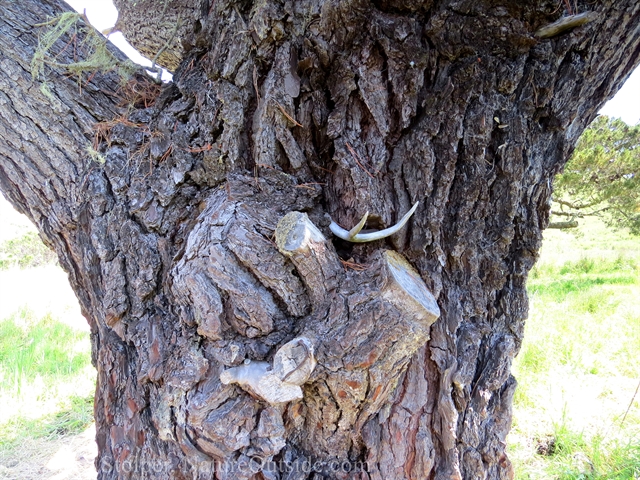
Wow, the tree surrounds the antler!
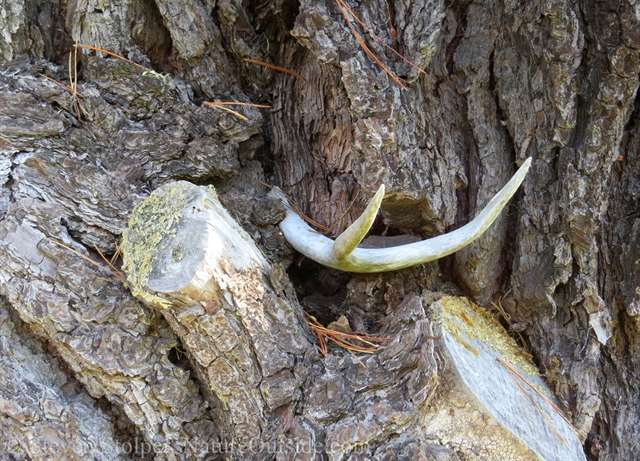
I wonder how long ago someone placed the antler here?
A Morning’s Tracking
As we wrap-up the morning’s tracking. I reflect on how much we can learn just by paying more attention to our surroundings. To quote Kephart, again:
In the school of the woods there is no graduation day.
I hope all my “classes” are as enjoyable as this one.
Related Articles on NatureOutside
Hike to Skeleton Grove (Part 1)
Mysteries on the Beach (Part 1)
Mountain Lion Tracks – Learn to Read Them
For fun facts and useful tips, join the free Bushcraft Newsletter.



Hi Steven,
Nicely done story. I really enjoyed your descriptions and analysis. I think the barn swallow nests are actually cliff swallows.
Best, Wyatt
Ooh, I think you’re right Wyatt. I looked at some of my (blurry) pictures of the birds and agree they look more like cliff swallows. I’m going to make a correction to the article.
Hi Steve and Wyatt!
I was there and I believe they were indeed barn swallows. We watched them coming and going with their distinctive rusty breasts.
Steve, I am honored to be called a senior tracker, but the term should be used with some caution since it is a specific term used by Cybertracker International: https://www.cybertracker.org/tracking/evaluations
to designate folks who have scored at the highest level on both track & sign identification and trailing evaluations on several continents. I am not there… sigh, except getting there in years.
Lisa, thank you for your thoughts on the swallows. And I’ll be more careful about using the term, “senior tracker.” Perhaps, “experienced tracker,” is a better phrase.
Steve, thank you so mom uch for the story! Being a tracker I felt I was with you. Well done and keep it up!😁
You’re welcome, Elizabeth! I’m glad you enjoyed the article.
Nice story. I agree with snake! Did I see the back of Kurt Zias’ head in the 1st photo?
Thanks for your thoughts on “snake,” Jim! I photograph the back of peoples’ heads so their identities remain a mystery. You will need to ask the man himself. 🙂